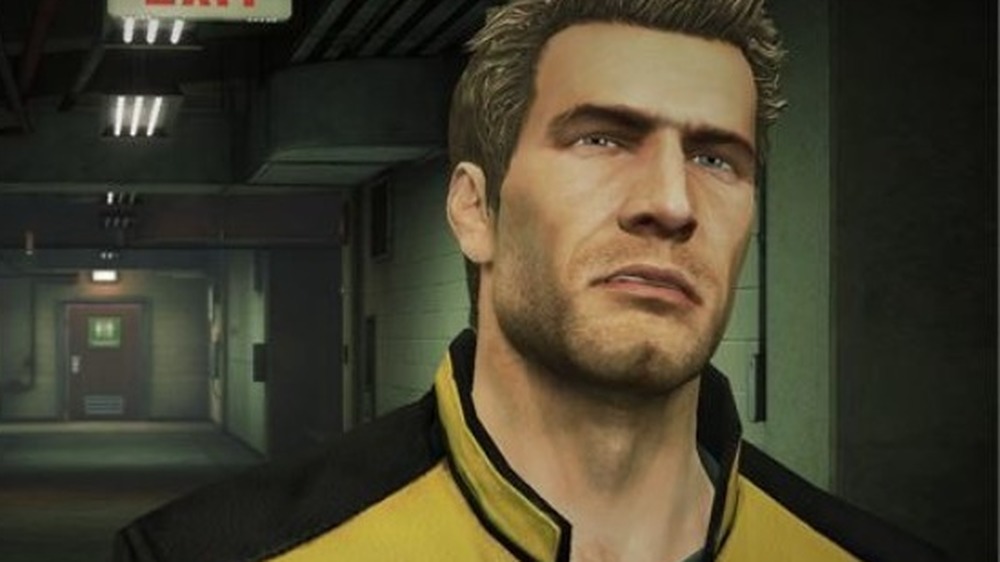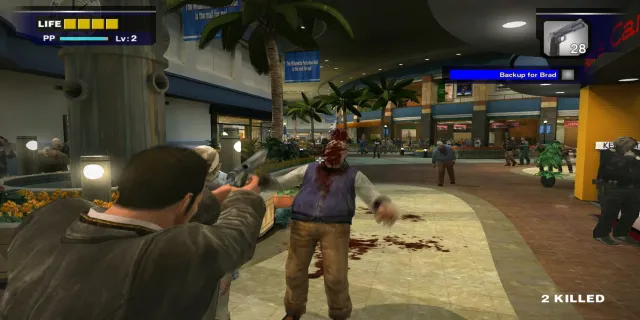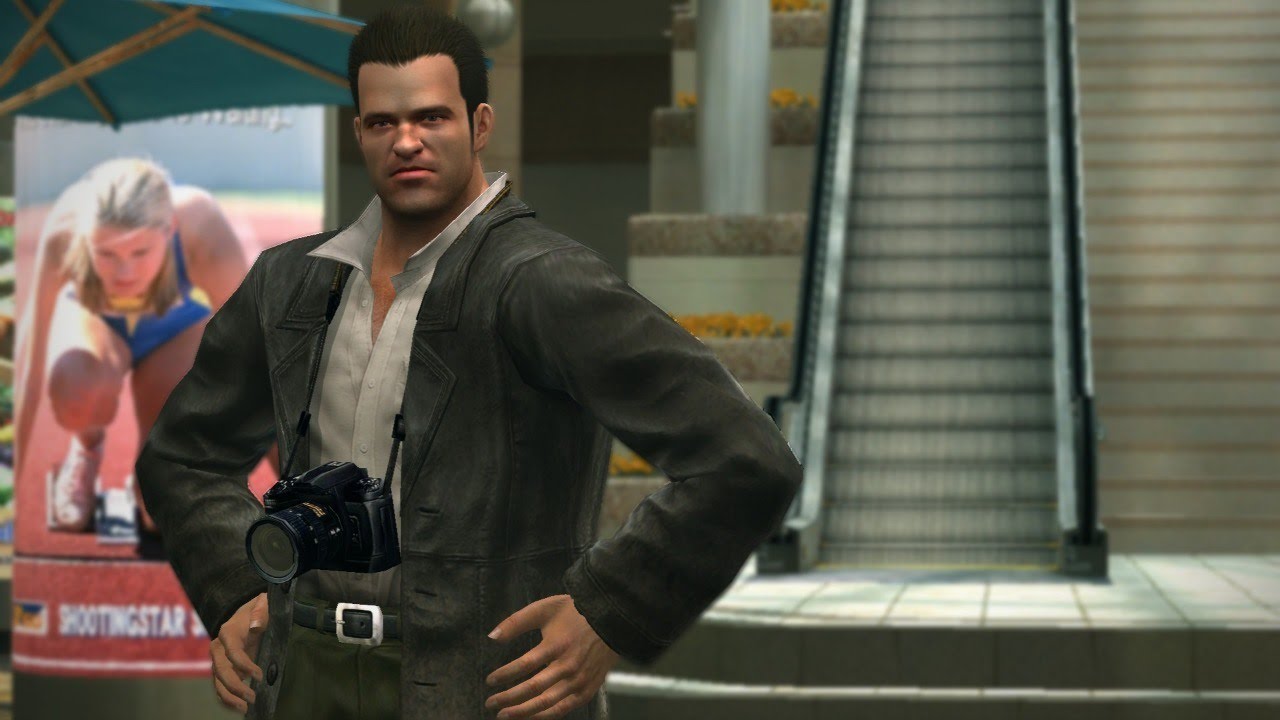Previously, Capcom’s most exciting new franchise was Dead Rising. It has since completely vanished from the gaming industry. We will talk about this venerable franchise today and attempt to determine what went wrong.
Dead Rising was one of Capcom’s main flagship series during the seventh console generation. Given that the first Dead Rising was a very Japanese game released on a platform that was only popular in the West, it had a decent success and exceeded many people’s expectations. It made its Xbox 360 debut in 2012 and enjoyed some success.
The wonderful “everything you can pick up is a weapon” system, the adorable characters, and the mysterious yet campy plot all contributed to the game’s success. When Dead Rising 2 was launched, Capcom was in the midst of its Western experimentation phase. Capcom leased out some of its games, including Dead Rising, to Western creators in an effort to capture the market because sales of video games in Japan were decreasing while they were rising in the West.
What actually happened, then? Then let us go back to the beginning…
Rise OF Dead Rising Franchise

Originally launched on August 8, 2006, the first game in this action-adventure series was later transferred to the Nintendo Wii as Dead Rising: Chop Till You Drop in 2009.
The story takes place in 2006 and follows freelance photographer Frank West as he searches for the “scoop of a lifetime” and ends up in the fictional town of Willamette, Colorado. As Frank, the player will have the ability to save lives, combat psychopaths, examine case files, and take pictures. Frank has three days to figure out the cause of the zombie epidemic in Willamette.
Three different game modes exist. The 72-hour mode, overtime mode, and infinity mode are further names for the story mode.
The plot revolves around Frank West, a photographer researching why the National Guard has blocked off the town of Willamette, Colorado. Frank is helicoptered to the top of the city’s mall and instructs the pilot, Ed DeLuca, to return in 72 hours.
When Frank enters the mall, he discovers zombies swarming the front entrance, and he is ultimately let in by a terrified older woman hunting for her dog. A Homeland Security officer, Brad Garrison, invites everyone to the security room. Otis Washington, the janitor, welds the door shut after entering. Brad exits the security room through the air vents. Jessica McCarney, also of Homeland Security, recognises an old guy in one of Frank’s images which she knows as Dr. Russell Barnaby.
Still, neither Brad nor Jessie is eager to divulge what they know. Frank returns to the mall through the air ducts after getting a transceiver and map from Otis in order to keep up with the mall’s happenings. He meets survivors who want his aid in getting to the security room and other humans driven insane by the zombie invasion, known as “Psychopaths.” As the story progresses, Frank and Brad have a series of violent confrontations with Carlito Keyes, a mysterious Hispanic man. At the same time, Frank continues to meet Isabela Keyes, a gorgeous Hispanic woman.
Dead Rising has six different endings. The player’s actions determine the outcome over the course of three days in Willamette.
Overtime Mode is unlocked by finishing all of the game’s case files and reaching Ending A. If these requirements are completed, the game will continue after 72 Hour Mode. Completing Overtime Mode unlocks Infinity Mode and gives the player the game’s canon ending. After completing Overtime Mode, the player will be able to watch how Frank and Isabela escaped Willamette.
Infinity Option is a survival sandbox mode in which Frank is challenged against both psychopaths and survivors. The player must survive as long as possible before being murdered or starving to death.
Dead Rising 2 came out in 2011, and it was a big hit immediately upon its release. The game is set in a Las Vegas-style resort named Fortune City in 2011, five years after Dead Rising. Former motocross champion Chuck Greene was visiting Las Vegas with his wife and children when zombies overtook the city. Katey, his daughter, was infected by his wife, who turned into a zombie.
Chuck and his daughter were able to flee the city, but he had to regularly collect Zombrex for Katey in order to save her. Three years later, he competed in Terror is Reality to raise money for the increasingly expensive anti-zombification medicine. Chuck competed in the programme and won, but an impostor released the zombies after that, causing an outbreak. Chuck has three days before the military comes to discover proof that contradicts his accusation of being the guy who started the virus, with the aid of CURE leader Stacey Forsythe.
Not only that, but he needs to find Zombrex on a regular basis to protect his daughter from changing. When you first start playing Dead Rising 2, the most crucial thing to remember is that you won’t be able to complete everything in a single game, at least not until you reach level 40. Due to a strict 3-day time constraint on the player’s activities, the player must carefully consider whether they will solve all of the cases to discover what occurred in Fortune City or attempt to rescue all of the survivors.
Since there are no official “modes” in Dead Rising 2, the plot is divided into portions similar to the first Dead Rising. Dead Rising 2 adds a slew of new weapons and gear, and the total number of zombies on screen has been boosted to 7000, more than ten times the number in the first game. Dead Rising 2 has many online modes, including a narrative mode for two players and a Terror is Reality mode for four players to battle against each other.
Terror is Reality is a multiplayer mode that pits four players against each other in a series of challenges. Players kill zombies with specific weapons and skills to gather the most points in a particular amount of time to be proclaimed the winner. There will be nine distinct tasks in all. Terror is Reality is comparable to American Gladiators in terms of the format. Players may utilise the money they earn in this mode to help Chuck in the main plot.
Dead Rising 3 was published on November 22, 2013. Capcom Vancouver created the game, which Microsoft released for the Xbox One. The “Apocalypse Edition” was made available for pre-order on Steam in June 2014 and was published on September 5, 2014.
This game’s plot is set in 2021, 10 years after the events of Dead Rising 2. It follows the protagonist of the game, a teenage mechanic called Nick Ramos, as he tries frantically to get out of the city of Los Perdidos. The government started employing Zombrex chips in 2017 – a necessary device that is implanted within afflicted patients and administers Zombrex regularly. However, because this chip also records them via GPS, many people refuse to have it planted.
The Zombrex chips placed in those infected after the events of Dead Rising 3 malfunctioned, resulting in this latest zombie pandemic. This epidemic leads Nick and the other survivors to flee the city before the military firebombs it.
There are a total of five known endings that may be obtained based on the decisions made by the player. The most acceptable conclusion is S, followed by C, D, and F. There’s also an alternate conclusion to Chapter 8 that isn’t lettered in the game but is labelled “Ending E” in the files. The genuine, canon ending is regarded to be ending S.
Like the previous games, Dead Rising 3 has a Story Mode, an Overtime Mode, and a Co-op Mode. However, they have introduced a new mode in this game which is known as the Nightmare Mode. Players may enjoy a more “traditional” Dead Rising experience in this mode. There is still a 6-day time restriction, no checkpoints, and players must save at restrooms or port-a-potties.
There are downloadable content packs. Each one focuses on a different survivor whom Nick encountered during the main narrative, and each one explores the zombie epidemic in Los Perdidos as described in the main story.
Dead Rising 4 threw a curveball into the mix. The most significant design change in Dead Rising 4 was the considerable decrease of the time mechanic. Frank West, a cynical journalist who is particularly excellent at killing zombies, is still a staunch off-and-on protagonist. The emphasis and complexity of Dead Rising 4 moved to the game’s robust fighting system.
Although more potent weapons are still beneficial, it is no longer as simple as grabbing the greatest gear and repeatedly pressing the attack button. In the fourth entry, the health bar drains a little faster, and you’ll need to learn all of the different skills to go through the most brutal battles.
It’s a holiday-themed narrative about a zombie outbreak in fictitious Willamette, Colorado, the same town afflicted in the first game. In a narrative that has shades of the original Division, zombies appear in town on Black Friday. It looks like a solo story at first appearance, but there are plenty of references to prior installments for die-hard fans. When you accomplish major plot events, time still passes in the game, and the tale is pretty well-told, with a sudden sad conclusion, precisely like the other entries in the series.
Although the aesthetics of Dead Rising 4 have held up well over time, the aural design is on another level. The mall and the neighboring town are alive with activity and ambiance. Fake announcements, jazzy original renditions of Christmas carols, and correct ambient echoes and occlusion of zombie groans reverberate throughout the mall. The openness of the audio sells the scale of the world the first time you pour out of the mall into the neighboring town. This sets us up nicely to move to the next part of our video.
Fall Of Dead Rising Franchise

Sadly, despite positive reviews, substantial content, pleasing aesthetics, and engaging deep action, Dead Rising 4’s poor sales doomed both the franchise and the firm that created it. It only sold a little more than a million copies, which was less than half of what Capcom had hoped for. The game was released on PS4 under the erroneous title of Dead Rising 4: Frank’s Big Package after a year of being locked on PC and Xbox One owing to Microsoft’s financing. It includes all of the DLC and the epilogue tale Frank Rising, which had timed objectives, although it fell short of expectations.
In 2018, Capcom Vancouver was abruptly closed down, and both of their active projects were canceled. Capcom has previously invested $40 million in Dead Rising 5 and an unnamed second open-world video game, both of which were developed in-house at its Vancouver office.
After publishing a good entry and halfway through creating a new sequel, the Dead Rising saga came to a standstill. Dead Rising 4 was released as an Xbox One exclusive during a low point in the Xbox One’s life cycle, without the fanfare of a launch title. It didn’t keep the series’ primary time mechanism, but it’s still filled with good material and received a 72 on Metacritic.
Dead Rising 5 began development nearly immediately following the release of Dead Rising 4 in 2016, yet the game wasn’t publicly revealed until the spring of 2018. On 4chan, some rather notable leaks surfaced around this period. According to the leaks, Dead Rising 5 will be set 25 years after the first game and will have Psychopath monster bouts and the original’s time-limited option.
This rumour turned out to be pure fabrication. Instead, Dead Rising 5 was supposed to take place in a fictional Mexican city between Dead Rising 2 and 3. Though Dead Rising 5 would play very similarly to the previous games, it would have specific crucial technical innovations that would set it apart from its predecessors and give the stale franchise a new lease on life.
The addition of two playable characters, each with their own set of talents, was one of the fundamental mechanics. Players will be able to play as both Chuck Greene and his daughter Katey Greene, two of the game’s main protagonists. Chuck would be the duo’s primary combatant, with the ability to create the Dead Rising series’ trademark combination weaponry.
As a result of her exposure to the virus in the second game, Katey would be able to control the zombie horde telepathically. Another important feature was that players could make combination weapons out of any objects or standard armaments. Unlike earlier games in the series, which required certain ingredients to construct a combination weapon, Dead Rising 5 would allow players to mix and match anything utilising procedural creation.
Having so much potential, it just seems unfair that the project had to shut down as Capcom Vancouver dissolved in 2018. So why did it happen?
With the addition of a new project director, a few crucial concepts were shelved. Procedurally produced combination weapons were deleted in place of the more conventional system used in previous entries. The open world was once again a focus for the developer, with the new director indicating a desire to expand it and provide new navigation features. A large portion of the Capcom Vancouver studio was laid off in early 2018.
Despite the high levels of stress at the office, Dead Rising 5 work proceeded until September 2018, when Capcom Vancouver was forced to put all projects on hold. The developer later learned that it was being shut down and that Dead Rising 5 would follow suit.
Future Of Dead Rising Franchise Will We See Another Game?

No game franchise is truly dead as long as it has a loyal following to keep it alive, as recent releases like the Kao the Kangaroo and Klonoa remasters demonstrate. Dead Rising fans aren’t as many as fans of other well-known game series, especially within Capcom’s catalogue, but they do exist. The presence of a fanbase, on the other hand, is not necessarily a requirement for a comeback, nor is it a guarantee of one. If Capcom decides to make another Dead Rising game, the existing gaming business and the present gaming culture should support it.
At its foundation, Dead Rising is an open world game about cramming as many zombies into the screen as possible. Sandbox areas and the Walking Dead are frequent gaming themes nowadays, maybe even more so than when the first Dead Rising was released.
Because of the overabundance, many gamers ignore games that appear to be generic zombie or open-world games. However, just like other aspects of pop culture, gaming culture has normalised the concept of reboots, remakes, and remasters. The remake phenomenon is perhaps more apparent with games since they have a more challenging time ageing nicely than other mediums.
The initial game would undoubtedly focus on any remake or revival of Dead Rising. It is the most well-known and well-known game in the series. Some may argue that bringing Dead Rising back with a remake is superfluous, given that the original game, its sequel, and Off the Record were all re-released in 2016. The first game, in particular, has been remade for PC, although solely in terms of performance. Most of the game’s key issues were left in the port, including the stupid survivor AI, terrible shooting mechanics, and Otis’ calls barring Frank from doing anything other than walking.
Capcom has had a lot of success recently with the Resident Evil brand. Resident Evil 7 effectively rebooted the franchise, as did the popularity of the remakes of Resident Evil 2 and 3. Capcom knows what it takes to build a well-made zombie game, so it’s feasible that Dead Rising may return even better than before. Remaking the first Dead Rising with improved controls and graphics quality would be a safe bet for a return to form. Keeping the countdown timer but adding additional dynamics to the initial game might easily attract the interest of both old and new followers.
Following Capcom’s demonstration that it still understands the charm of Dead Rising, future entries that keep the formula but incorporate the simplified structure of Dead Rising 2 might be a winning strategy for attracting fans. However, a delicate balance has to be maintained between Dead Rising’s seriousness and campy nature, which hasn’t been fully nailed since Dead Rising 2, and it may be tough to achieve.
Nonetheless, Capcom discovered that reconnecting to their roots is what may indeed make the magic happen, as seen by their latest releases that harken back to their ancestry rather than their disastrous outsourcing and Westernization plans. If this series is to go on, it needs to return to its roots, for in the end, it was only vaguely recognized at best.
If you enjoyed this video, like and share and also subscribe to our channel. Make sure to press the bell icon so that you can be notified when we upload a new video which we do every day! See you in the next one!
